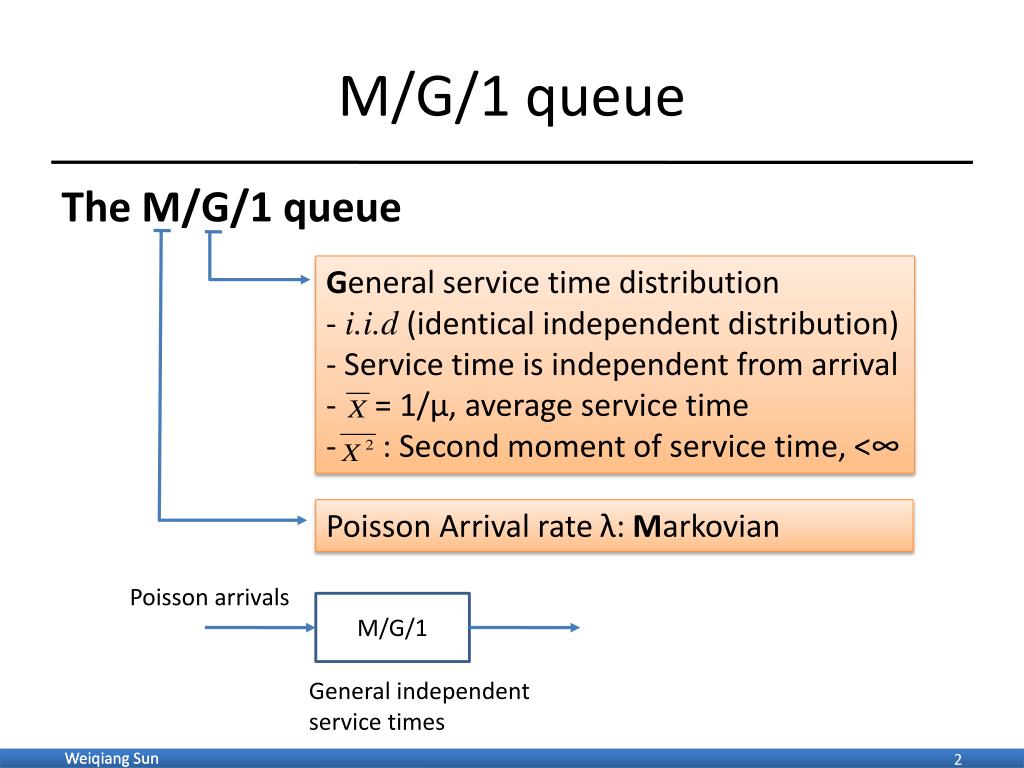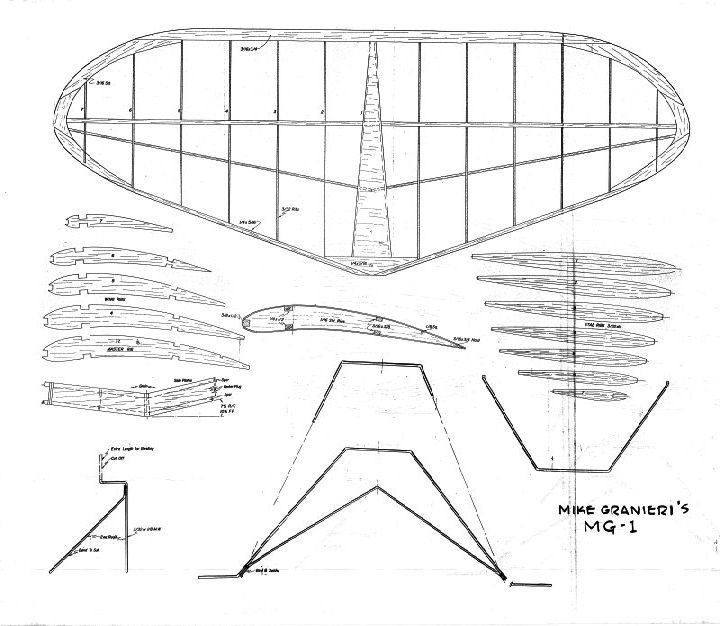Figure 4 from An M/G/1 Model for Gigabit Energy Efficient Links With Coalescing and

McGraw 6.8.14 M&G 1_1 a photo on Flickriver
M/G/1 queue. (t), does not now constitute a Markov process. In spite of this, the mean queue length, waiting time, and sojourn time of the M/G/1 queue can be found. The results (the Pollaczek-Khinchin formulae) will be derived in the following. It turns out that even the distributions of these quantities can be found.

Figure 4 from M/G/1/K SYSTEM WITH PUSHOUT SCHEME UNDER VACATION POLICY Semantic Scholar
Our analyses for M/M/1 and M/G/1 queuing models will depend heavily on probability. To that extent, we dedicate this section towards reviewing concepts regarding Poisson point processes and continuous-time markov chains. The content from this section is an adaptation of that presented here1. The reader may refer to this as a secondary source.

m/g/1 model YouTube
Basic Model Arrivals Departures Queue Server CS 756 2 Major parameters: interarrival-time distribution service-time distribution number of servers queueing discipline (how customers are taken from the queue, for example, FCFS) number of buffers, which customers use to wait for service

PPT M/G/1 queue PowerPoint Presentation, free download ID2052454
In queueing theory, a discipline within the mathematical theory of probability, the G/M/1 queue represents the queue length in a system where interarrival times have a general (meaning arbitrary) distribution and service times for each job have an exponential distribution. [1]

The Ratio BOP/CLP in the BlowUp Region i 0 = 1 for 1Burst/M/1 Models... Download Scientific
Also, to increase the flexibility of using the M/G/1 model with cyclic service times in optimization problems, an approximation approach is introduced in order to obtain the average number of customers in the system. Finally, using this approximation, the optimal N-limited service policy for a single vacation queueing system is obtained.

MG 1
The first crash, in October 2018, involved a 737 Max 8 operated by Indonesia's Lion Air that killed 189. The second incident was in March 2019, when an Ethiopian Airlines flight, also a 737 Max 8.
UT5LrJzZEHWTDZL819clRt1Bj5pvCUdHnsrCXWz0Gr6lZ5M420Afs2hxUzhZ1TpOcl_IqB6_zg=s900ckc0x00ffffff
Summary. We study a queueing system with memoryless Poisson arrivals and generally distributed processing times, the so-called M/G/1 system. Performance measures of this system can be derived exactly, using the principle of work conservation and the property of PASTA (Poisson arrivals see time averages).

(PDF) An analysis of the M/G/1 system with N and T policy Sun Hur Academia.edu
• For analyzing the G/M/1 queue using the Imbedded Markov Chain approach, the imbedded points are chosen to be the arrival instants of jobs to the system • System State = Number in the system immediately before an arrival instant ni= Number in the system just before the itharrival si+1 = Number of jobs served between the iththand the (i+1).

M G 1 AMA Academy of Model Aeronautics
If arrivals are Poisson, then the proportion of time a queueing system spends in a given state ( ) is equal to the proportion ( ′) of arrivals who find the system in that state. Notation. State process: = { ( ): ≥ 0} Poisson point process: = { : ≥ 0} at rate with counting process { ( ): ≥ 0} PASTA. Assumption: Lack of Anticipation (LAA.

Figure 4 from The M/G/1 fluid model with heavytailed message length distributions Semantic
Transform-Free Analysis of M/G/1/K and Related Queues Shun-Chen Niu1 School of Management The University of Texas at Dallas P. O. Box 830688 Richardson, Texas 75083-0688. similar results for several generalizations of the basic M/G/1/K model. AMS 1980 subject classification. Primary: 90B22; Secondary: 60K25. IAOR 1973 subject.

Figure 4 from An M/G/1 Model for Gigabit Energy Efficient Links With Coalescing and
The M/G/1 theory is a powerful tool, generalizing the solution of Markovian queues to the case of general service time distributions. There are many applications of the M/G/1 theory in the field of telecommunications; for instance, it can be used to study the queuing of fixed-size packets to be transmitted on a given link (i.e., M/D/1 case).
AGIKgqNhT4_y_qwtmyxWco5f13M8y1mA7aMl7r4WnladMg=s900ckc0x00ffffffnorj
Madan, K.C.: An M/G/1 queue with second optional service. Queueing Syst. 34, 37-46 (2000) Article MathSciNet Google Scholar Gupur, G.: Analysis of the M/G/1 retrial queueing model with server breakdowns. J. Pseudo-Differ. Oper. Appl. 3, 313-340 (2010) Article MathSciNet Google Scholar

Figure 10 from An M/G/1 Model for Gigabit Energy Efficient Links With Coalescing and
M/G/1 Queueing Model Basic Concepts The M/G/1 queueing model is similar to the M/M/1 model except that the service rate follows a general distribution. This means that the service rate distribution can be any distribution with mean μ and standard deviation σ.

eTm, model 01, set 1, 62 pics Russian Teens Models
The M/G/1 queue In many applications, the assumption of exponentially distributed service times is not realistic (e.g., in production systems). Therefore, we will now look at a model with generally distributed service times. Model: Arrival process is a Poisson process with rate λ.

Figure 3 from Application of M/G/1/K model for aggregated VoIP traffic packet loss estimation
Daniel Myers This lectures deals with some variations to the basic M/G/1 model, and their applications to real systems. Approximating a G/G/1 Queue The G/G/1 queue has both general service times and a general arrival process.

M&G Monogram by MAYBE...
The M/G/1 Queue We discussed the M=G=1 queue; see Example 4.1 (A), p. 164, Example 4.3 (A), pp. 177-179, and Exercise 4.15 in Ross. See Examples 4.1 (B) and 4.3 (B) for a treatment of the G=M=1 queue. The M=G=1 queue has a Poisson arrival process (the M for Markov), IID service times with a general cdf G, one server and unlimited waiting space.